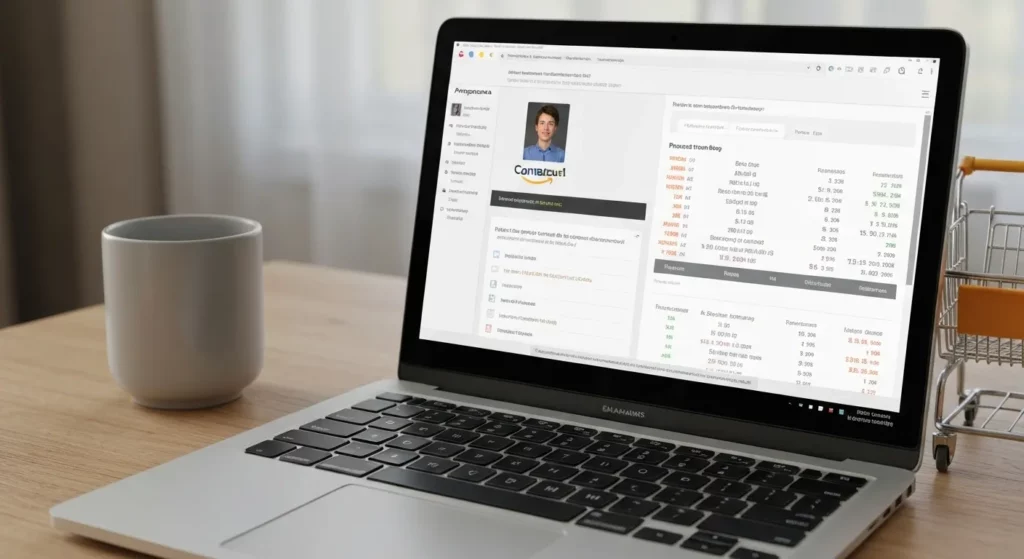When it comes to managing money, developing strong financial habits is one of the best ways to stay on top of your finances and build a secure future. A foundational pillar of this financial wellness is budgeting. Whether you’re diligently working on your personal finances to gain clarity and control, strategically planning for long-term goals like retirement or a down payment on a house, or trying to rein in your business spending to improve profitability, a solid budgeting strategy is absolutely key. It is the roadmap that guides your financial decisions. One of the most common, time-tested, and reliable ways to budget is through using the traditional budget method, a straightforward approach that has helped countless individuals and families achieve their financial objectives.
Today, I’ll walk you through a comprehensive overview of what the traditional budget method is, exploring its core principles and why it remains so effective in a world of complex financial tools. We will cover exactly how to put it into practice with a step-by-step guide, and, of course, I’ll share a few handy tricks and modern adaptations to make it work even better for your unique financial situation. By the end of this article, you’ll have a clear understanding and the confidence to build your own successful budget.

What is the Traditional Budget Method?
The traditional budget method, sometimes called the line-item budget or a static budget, is a beautifully simple yet profoundly effective financial planning tool. Its strength lies in its clarity and structure. The process involves splitting your total income and all your anticipated expenses into different, distinct categories, then assigning a fixed spending limit to each of those categories for a set period, typically one month. By meticulously doing this, you create a detailed financial plan that allows you to see exactly where your money is going. This awareness is the first step toward ensuring that you don’t overspend, accumulate unnecessary debt, or drift away from your financial goals.
Essentially, the traditional budget is meticulously split into two major parts: income and expenses. First, you have your income—this is all the money you bring in during the budget period, whether it’s from your primary job, side gigs, freelance work, investment dividends, or any other sources. It’s the total resource you have to work with. Then you have your expenses—these are all the costs that you need to pay for, which are further broken down into both fixed costs (like rent) and variable costs (like groceries). It requires you to account for every dollar you plan to spend.
The fundamental goal with the traditional budget method is to create a plan where your total projected expenses do not exceed your total income. Ideally, your income should be greater than your expenses, creating a surplus. This positive balance is what empowers you to save, invest, and pay down debt more aggressively. This method keeps your financial life balanced, prevents you from falling into the stressful cycle of debt, and provides a clear path toward financial stability and peace of mind.
Breaking Down the Traditional Budget
Let’s dive a little deeper into the key components of this foundational budgeting method. You should always start by getting a crystal-clear picture of your income—this is where it all begins, as it defines the resources you have available. You need to figure out a reliable number for how much money you’re making each month. If you have a regular, fixed salary, this is a very straightforward task; you can simply use your net pay (after taxes and deductions). But if your income fluctuates—let’s say you’re a freelancer, a small business owner, or you work on commissions—you’ll want to be more conservative. A good practice is to average out your earnings over the past six to twelve months to get a more realistic idea, or even better, base your budget on your lowest earning month from the past year to ensure you can cover all expenses even in lean times.
Once you have a firm handle on how much money you’re making, it’s time to itemize your fixed expenses. These are the predictable, recurring costs that generally stay the same every month. Common examples include your rent or mortgage payment, car payments, regularly scheduled utility bills (though some can vary slightly), insurance premiums (health, auto, life, renters), and minimum loan payments for student loans or credit cards. These are usually really easy to track because they don’t change a lot from month to month, and they form the non-negotiable bedrock of your budget.
The next, and often most revealing, step is to figure out your variable expenses. These are the costs that can, and often do, change from month to month based on your activities and choices. This category includes things like groceries, gasoline for your car, dining out at restaurants, entertainment costs like movie tickets or concerts, shopping for clothing, and any other discretionary costs. These might be trickier to predict with perfect accuracy, but if you take a look at your bank and credit card statements from the past few months, you can get a pretty good idea of how much you spend on average in each area. Variable expenses is where you have the most control and flexibility, and it’s often where you’ll be able to identify opportunities and make adjustments if you are trying to save more money or cut back.
Finally, and most importantly for your future self, you want to intentionally set aside some money for savings and debt repayment. This should be treated as a non-negotiable expense, not as an afterthought. A good rule of thumb is the “pay yourself first” principle: always try to allocate a portion of your income to either saving for the future or aggressively paying down any high-interest debts before you start spending on variable items. This can be, of course, a fixed amount each month that you transfer right after getting paid, or it could be a specific percentage of your income. This proactive step is what transforms budgeting from a simple spending plan into a powerful wealth-building tool.
How to Set Up Your Traditional Budget
Now that you know what goes into it, let’s talk about how to actually put your traditional budget into action and make it a working document for your financial life. As we already said, the very first step is to calculate your total monthly income from all sources and then list out all your fixed expenses and your estimated variable expenses. Be thorough here; the more detailed you are, the more accurate and useful your budget will be. Once you’ve accounted for all your income and expenses, it’s time to deliberately allocate funds for your savings and debt repayment goals. A good starting point, especially for beginners, is the popular 50/30/20 rule. This framework suggests that 50% of your after-tax income goes to “needs” (essential fixed costs like housing and utilities), 30% goes to “wants” (variable costs like dining out and entertainment), and the remaining 20% goes toward savings and paying down debt beyond the minimum payments.
The final, and ongoing, step is to track your spending meticulously. A budget is only a plan; the real work lies in making sure that you stick to the plan. Consistent tracking is what brings the budget to life and holds you accountable. You can track your spending manually in a notebook, by using a digital spreadsheet (there are many free templates available online), or you can download a budgeting app to help you keep track automatically. The key is to find a method that you’ll consistently use. It is crucial to regularly check in with your budget—at least once a week—to see if you’re staying within your designated limits and make real-time adjustments when it’s necessary to stay on course.
Hacks to Make the Traditional Budget Method Better
While the traditional budget method is a solid and reliable strategy, it can sometimes feel a little bit too rigid, manual, or time-consuming in our fast-paced world. So we gathered a list of practical hacks and modern approaches to make it a little easier to manage and even more effective in helping you reach your goals.
First, seriously consider using a budgeting app. While the traditional budget method often brings to mind pen and paper or complex spreadsheets that require you to manually track your spending, leveraging technology can make the process a lot easier and more insightful. Modern apps can securely link to your bank accounts and credit cards, automatically categorizing your expenses, tracking your spending in real time, and giving you a visual breakdown of where your money is going through charts and graphs. This automation means you don’t have to worry about missing anything or forgetting to write down a cash purchase, which saves time and reduces human error.
Another great trick is to build a robust emergency fund, which is slightly different than a simple contingency fund. Unexpected expenses can and will pop up at any time, whether it’s a major car repair, a sudden medical bill, or an unexpected job loss. These events can be financially devastating if you’re not prepared. Setting aside a small portion of your income each month into a dedicated, high-yield savings account for emergencies can prevent these surprise costs from throwing off your entire budget and forcing you into debt. The standard recommendation is to save 3 to 6 months’ worth of essential living expenses. Even just starting with a goal of $1,000 can provide significant peace of mind.
It’s also a good idea to proactively plan for irregular but predictable expenses. Many significant costs only come up once or twice a year, such as annual insurance premiums, holiday gift-giving, car registration fees, or property taxes. These can cause major budget stress if you haven’t planned for them. To avoid being caught off guard, create “sinking funds.” Break those large annual costs down into monthly amounts (e.g., a $1,200 annual insurance premium is $100 per month) and set that sum of money aside each month in a separate savings account. This way, when the bill is due, you’ll have the cash ready and waiting and won’t have to scramble.
If you want to accelerate your savings or get out of debt faster, a focused effort to cut back on your variable expenses is the most effective strategy. This category is where your daily choices have the biggest impact. It includes things like dining out, daily coffee runs, shopping for clothes, subscription services you barely use, or other non-essential purchases. Review this category line by line and ask yourself what you can reduce or eliminate. Even the smallest changes in these areas, like packing your lunch a few times a week or canceling an unused streaming service, can free up a surprising amount of money for your more important financial goals.
Another incredibly smart move is to automate your financial life as much as possible, especially your savings. Set up automatic transfers from your checking account to a savings account or retirement fund. Schedule this to happen the day you get paid. This “out of sight, out of mind” approach ensures that you’re always putting money away without having to rely on willpower or remembering to do it manually. This simple action helps you stick to your savings goals without the temptation to spend that money elsewhere. You can also automate your bill payments to avoid late fees and protect your credit score.
Finally, don’t treat your budget as a static document that you create once and forget about. You must review your budget on a regular basis. Life changes constantly, and so do your expenses and income. Maybe you got a raise or a promotion, which means you can increase your savings rate. Or maybe you moved to a cheaper apartment, freeing up cash. Whatever the case, make sure to review your budget at least once a month for a quick check-in and perform a deeper review every quarter. This will help you stay on track, ensure your budget still reflects your reality and priorities, and confirm that you’re always actively working towards your financial goals.

Wrapping It Up
The traditional budget method is a classic for a reason: it’s simple, intuitive, effective, and most importantly, it puts you firmly in control of your money. It’s a foundational skill for financial literacy. By systematically breaking down your income and expenses into clear categories, you can get a comprehensive picture of where your money is going and identify powerful ways to manage it better. With a little bit of initial planning and ongoing discipline, this time-tested budgeting method can help you avoid the stress of debt, build a substantial savings cushion for the future, and confidently achieve your most important financial goals. And with a few modern hacks like using apps to automate tracking, automating your savings transfers, and building dedicated funds for emergencies and irregular expenses, you can make the entire process even easier, more sustainable, and more manageable for the long term.
Want to plan your budget, but you find that a digital app isn’t for you? We might have the perfect solution. Some people find the physical act of writing things down more impactful and engaging. Instead of an app, you can try using a dedicated budget planner.
Read also: Once you have your spending under control, it’s wise to think about the best way to pay for things. To learn more, check out these 6 Things You Should Always Buy with Cash














